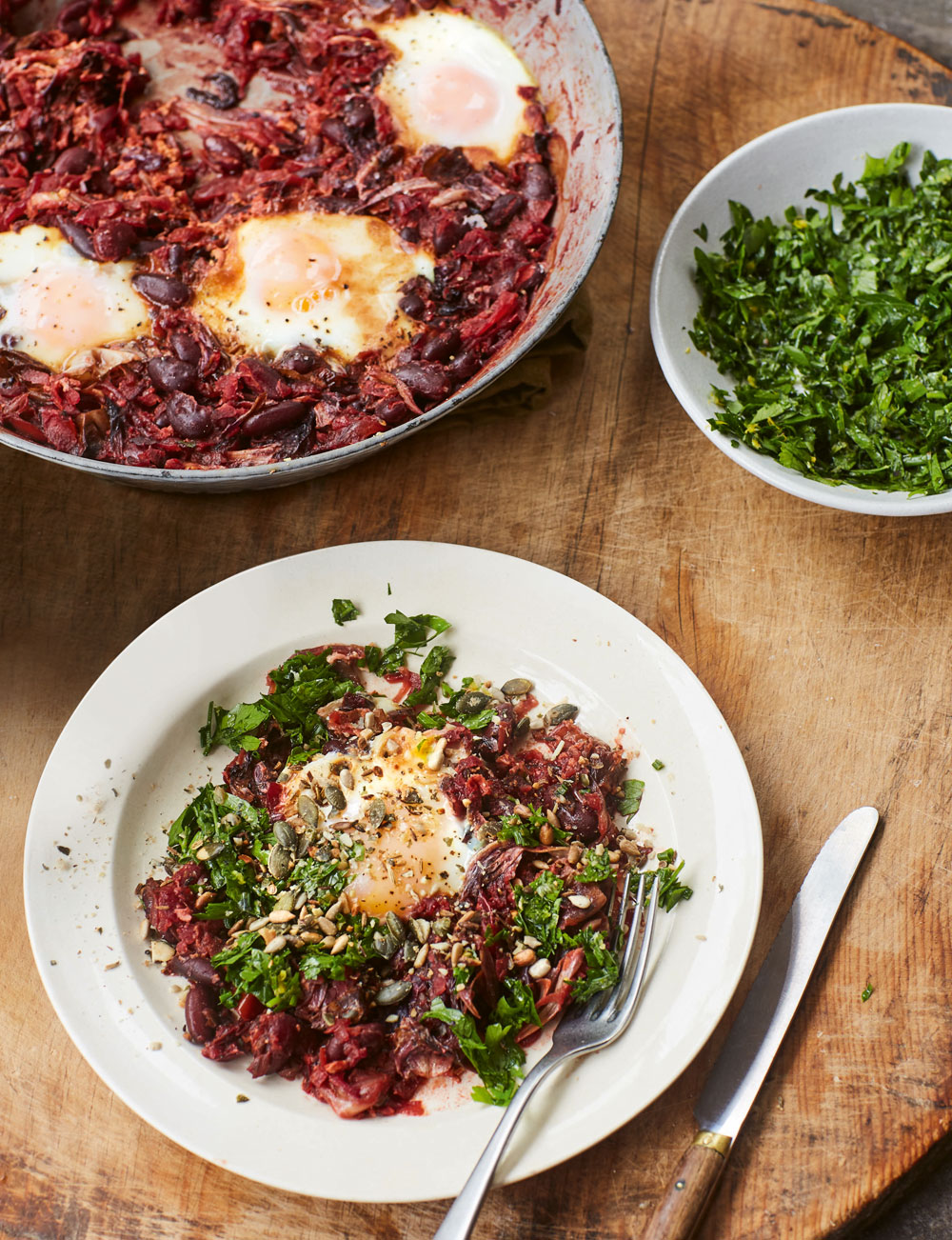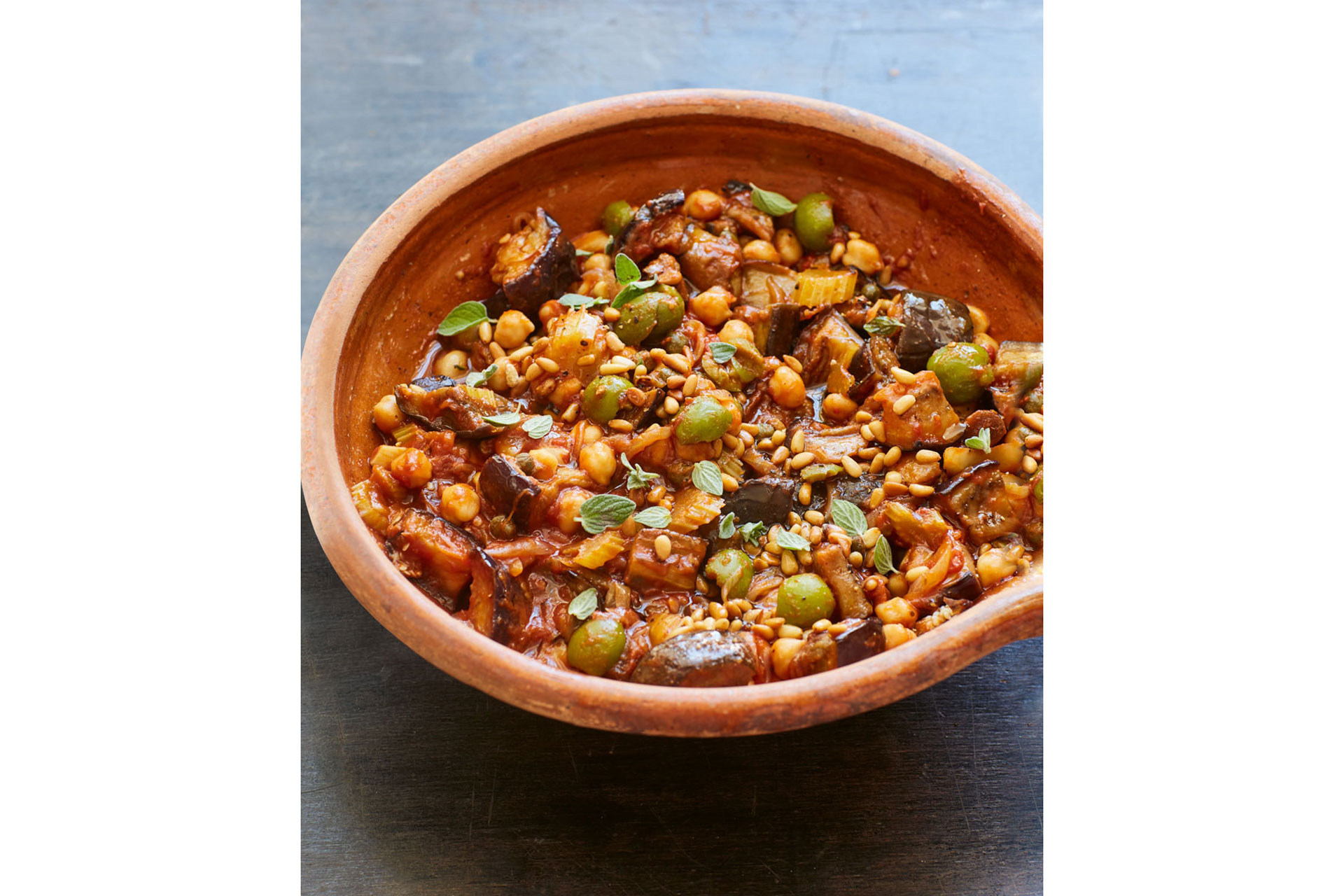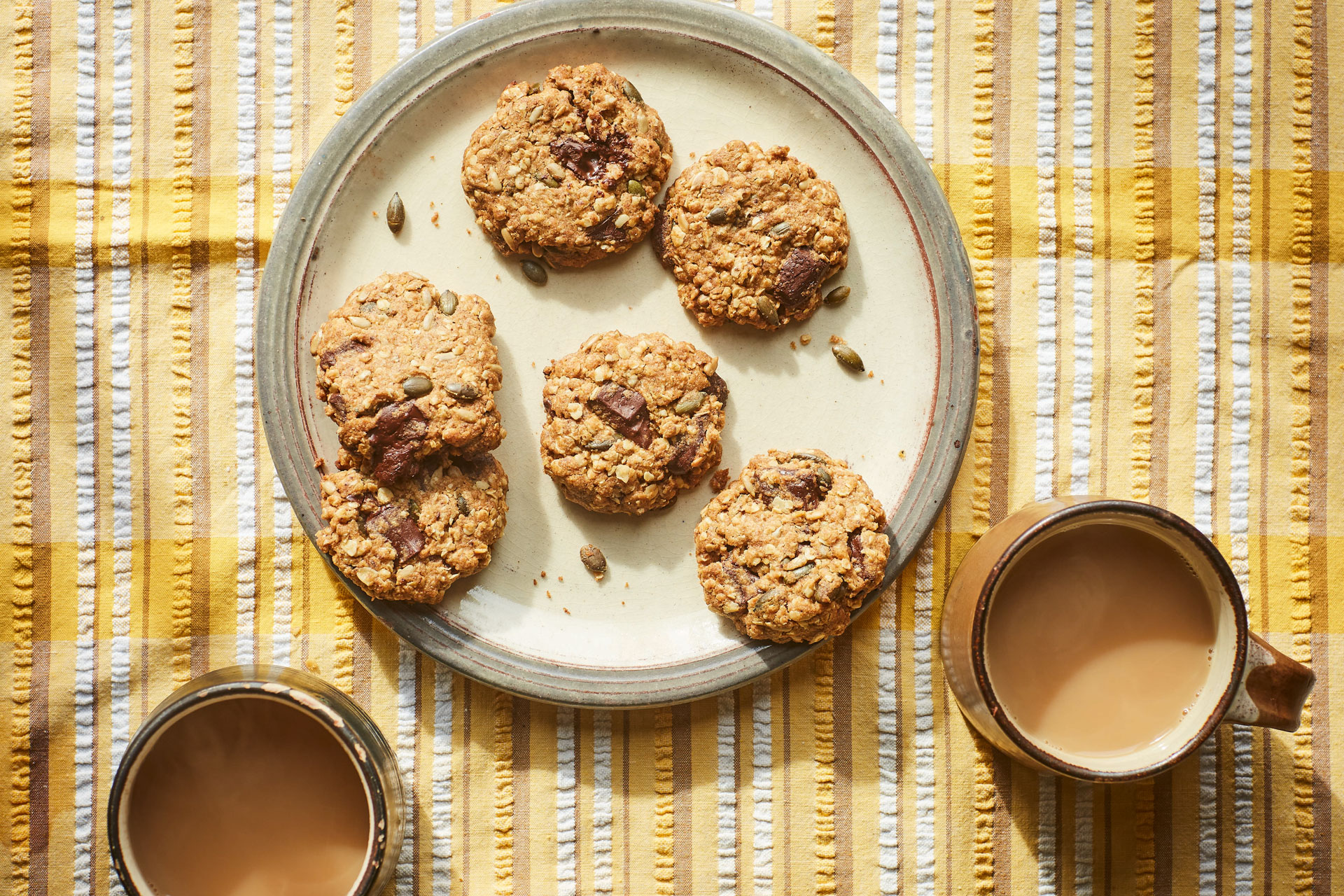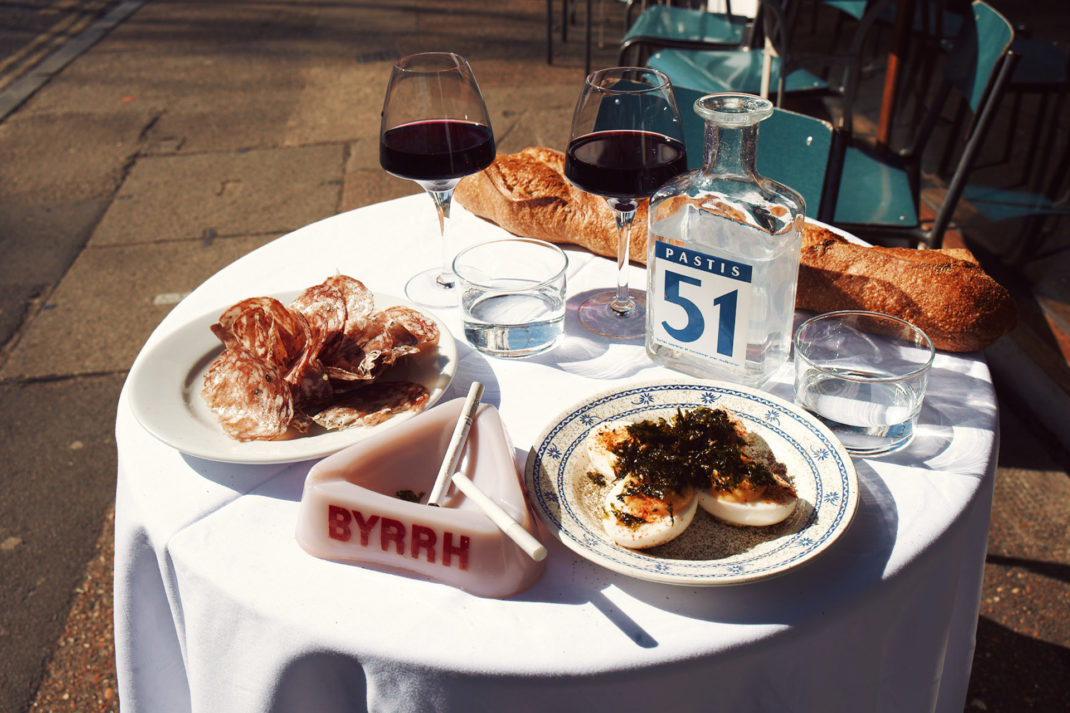
3 Plant-Powered Recipes From Hugh Fearnley-Whittingstall
By
11 months ago
The chef's latest book is all about the power of plants
How many plants are you eating each week? Reckon you could hit 30? That’s the magic number, according to River Cottage chef Hugh Fearnley-Whittingstall, who has just released a new cookbook on the topic, How to Eat 30 Plants a Week. The book includes an introduction from doctor and gut health guru Tim Spector, who delves into the benefits of building your diet around a diverse selection of plants. That includes not just your fruits and your veggies, but also nuts, seeds, spices, pulses and even chocolate and coffee. Wondering where to start? Below, we share three recipes from the buzzy new book.
Hugh Fearnley-Whittingstall Recipes

Purple Shakshuka
Beetroot adds fibre and richness to a classic shakshuka, as well as turning it a fab purple colour. It makes a great breakfast or brunch, or you can serve it up with wholegrain bread or toast for a hearty supper to feed two.
Serves 2 heartily, or 4 lightly
Ingredients:
- Oil or fat for cooking
- 1 large or 2 medium-small red or brown onions, finely sliced
- 2 garlic cloves, finely grated or chopped
- 1 small red chilli, or a good pinch of dried chilli flakes (optional)
- ½ tsp cumin seeds
- ½ tsp smoked paprika, plus an extra pinch
- 1 medium beetroot, scrubbed and coarsely grated (about 150g)
- 1 red pepper, cored, deseeded and sliced (optional)
- 400g tin peeled plum tomatoes
- 2 tbsp extra virgin olive oil
- 400g tin kidney beans
- 1 small radicchio, roughly shredded
- 4 eggs
- Sea salt and black pepper
To serve
- 50g herb leaves, such as parsley, chives, coriander, chervil or lovage, roughly chopped
- Finely grated zest and juice of ½ lemon
- 1–2 tsp extra virgin olive oil
- Dukka
Method:
- Heat a little oil or fat in a medium frying pan, or a shallow, wide, flameproof casserole over a medium heat. Add the onion(s) and fry for 6–8 minutes until soft but not coloured, then add the garlic, chilli, cumin seeds and smoked paprika. Cook, stirring often, for 2 minutes.
- Add the beetroot, red pepper if using, and the tinned tomatoes, crushing them with your hands as they go in (and picking out any stalky ends or bits of skin). Cook for 8–10 minutes until the tomatoes start to break down, helping them to do so with the back of the spoon. Stir in the extra virgin olive oil, and a splash of water if the mixture looks at all dry.
- Drain the beans, keeping a little of the liquid, then add them to the pan with the saved liquid. Stir in the radicchio and simmer gently for 4–5 minutes, stirring occasionally, until everything is tender, well combined and saucy.
- Using the back of a tablespoon, make 4 hollows in the mixture. Crack an egg into each hollow and season with salt, pepper and a pinch of smoked paprika. Turn the heat to low, put the lid on the pan and cook for 4–6 minutes until the egg whites are set but the yolks are still runny.
- Meanwhile, in a small bowl, dress the herbs with the lemon zest and juice, a pinch of salt, and the extra virgin olive oil.
- Serve the shakshuka as soon as it is ready, with the dressed herbs, and dukka to sprinkle over.
Swaps
- Use cannellini, flageolet or butter beans, chickpeas or tinned Puy, green or brown lentils instead of kidney beans.
- You can also replace the radicchio with red chicory, Little Gem lettuce, or a large handful of seasonal greens, such as purple or green kale. If you haven’t got a beetroot, you can use a carrot or two instead.
Caponata with Chickpeas and Apricots

Caponata is a gorgeous Sicilian sweet and sour dish with aubergine at its heart. I’ve included courgettes as well here, but you can use just aubergines if you prefer. I like the chunkiness the dried apricots lend, but feel free to introduce other dried fruits if you like. The chickpeas are not authentic, but they go very well with the flavours and textures, and make for a more substantial dish.
Caponata is classically served at room temperature and it keeps in the fridge for a few days, so it’s a good one to make in advance.
Serves 4
Ingredients:
- 2 medium aubergines (about 500g in total)
- 2 medium courgettes (or use another aubergine)
- 3 tbsp vegetable oil
- 1 onion, finely sliced
- 2 celery sticks, thinly sliced
- 2 garlic cloves, chopped
- 6 large plum or other ripe tomatoes, peeled, deseeded and chopped, or a 400g tin peeled plum tomatoes
- 400g tin chickpeas, drained and rinsed
- 2 tbsp balsamic vinegar
- 70g dried apricots (unsulphured), roughly chopped
- 2 tbsp capers
- 60g pitted green olives, torn in half
- Sea salt and black pepper
To finish:
- 50g pine nuts or pumpkin seeds, toasted
- A good handful of oregano leaves (or basil or parsley)
- A squeeze of lemon juice
- Extra virgin olive oil to trickle
Method:
- Cut the aubergines into 2–3cm cubes, tip into a colander and sprinkle with 2 tsp salt. Toss well and then leave to draw out the juices for about an hour. Cut the courgettes into similar-sized cubes; set aside.
- About halfway through the aubergine salting time, heat 1 tbsp of the oil in a large saucepan over a fairly low heat. Add the onion and celery and fry for about 10 minutes until tender and golden. Toss in the garlic and cook for a further 2 minutes until fragrant.
- Tip in the tomatoes (crushing tinned ones with your hands as they go in and picking out any stalky ends or bits of skin). Simmer for 10–15 minutes to reduce a little. Add the chickpeas, balsamic vinegar, dried apricots, capers and olives and simmer for another 10 minutes, stirring often. Remove from the heat.
- Rinse the aubergines and pat dry with kitchen paper. Heat a little more oil in a large frying pan over a medium-high heat. When hot, add the aubergine cubes and fry for about 5–10 minutes, stirring occasionally, until golden and tender. Remove with a slotted spoon and drain on kitchen paper, then tip into the tomato mixture.
- Add a little more oil to the pan and fry the courgettes in the same way, then drain and add to the aubergine and tomato mixture.
- Bring back to a simmer and cook for another 10–15 minutes, stirring occasionally, until everything is well combined, reduced and thickened. Season with salt and pepper to taste.
- Leave the caponata to cool to room temperature if you have time, or serve it hot if you prefer. Sprinkle with the toasted pine nuts or pumpkin seeds, oregano (or other herb) leaves, a squeeze of lemon and a trickle of extra virgin olive oil to finish.
Chocolate and Spice Cookies

There’s no reason why delicious treats like cookies can’t help you rack up your plant count with some healthy seeds and lovely spices – and chocolate! I love the specific combination of ginger and cardamom with chocolate, but you can use a teaspoonful of mixed spice if that’s more convenient.
You can start with fridge-cold butter (as it will be melted), so it is easy to knock these up at short notice. This is a fairly small batch – just double up the quantities if you would like to make more. Below are some lovely variations to this simple recipe.
Makes 12
Ingredients:
- 125g butter
- 40g soft light brown sugar
- 2 cardamom pods (or ½ tsp ground cardamom)
- 125g fine plain wholemeal flour
- 75g porridge oats
- 50g sunflower or pumpkin seeds (or a mix)
- 1 tsp ground ginger
- 70g dark chocolate (70% cocoa solids), chopped into small (pea-sized) pieces
Method:
- Preheat the oven to 180°C/160°C Fan/Gas 4. Line a baking sheet with baking paper.
- Melt the butter and sugar together in a small saucepan over a low heat, stirring often until well blended. Take off the heat and leave to cool a little.
- In the meantime, if using cardamom pods, bash the pods with a rolling pin to release the seeds then use a pestle and mortar to crush these. Discard the broken pods and use the crushed seeds.
- Mix the flour, oats, seeds, ground ginger and cardamom together and stir into the melted mixture until evenly blended. If the mixture is still warm, leave it to cool for a few more minutes before adding the chocolate (so the pieces don’t melt). Stir to distribute the chocolate through the cookie batter.
- Take dessert spoonfuls of the mixture and place on the lined baking sheet, leaving a 3–4cm space in between as they will spread a little on baking. Use the back of the spoon to flatten each cookie into a rough circle, no more than 1cm deep. (I aim for 12 fairly small cookies.)
- Bake in the oven for 12–15 minutes, depending on size, until the cookies are turning golden, and are more deeply coloured at the edges. They’ll still be a bit soft at this point: leave to cool completely and crisp up before removing from the tray.
- You can store the cookies in an airtight container for up to a week – good luck with keeping them that long!
Swaps
- Try adding raisins, chopped dried apricots (unsulphured) or other dried fruit: up to 50g can be stirred in with, or instead of, the chocolate.
- For nutty chocolate cookies, use roughly chopped hazelnuts, peanuts, cashews, walnuts or almonds instead of the sunflower or pumpkin seeds.
- You can use 1 tsp ground mixed spice instead of cardamom and ginger.
Extract taken from How to Eat 30 Plants a Week by Hugh Fearnley-Whittingstall (Bloomsbury, £25 Hardback). Photography © Lizzie Mayson.






